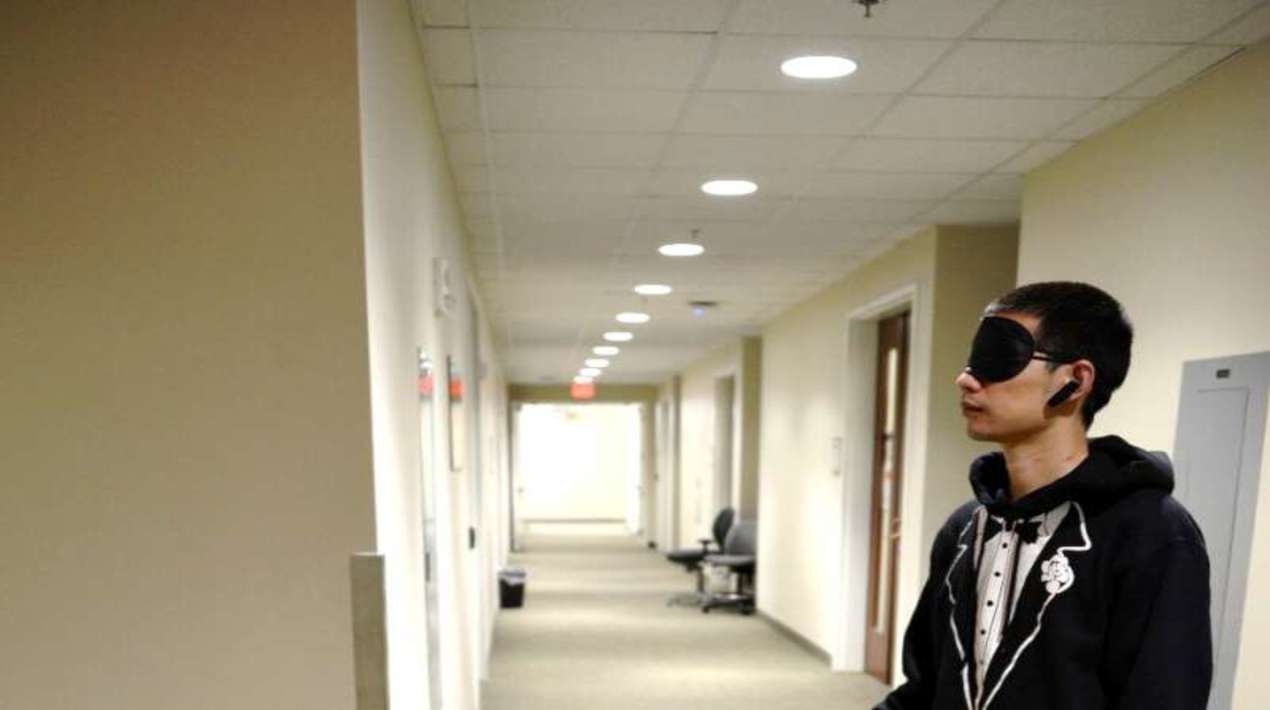
Equipped with a colour 3D camera, an inertial measurement sensor, and its own onboard computer, a newly improved robotic cane could offer blind and visually impaired users a new way to navigate indoors. When paired with a building’s architectural drawing, the device can accurately guide a user to the desired location with sensory and auditory cues, while simultaneously helping the user avoid obstacles like boxes, furniture, and overhangs. The development of the device was co-funded by the National Institutes of Health’s National Eye Institute (NEI) and the National Institute of Biomedical Imaging and Bioengineering (NIBIB).
“Many people in the visually impaired community consider the white cane to be their best and most functional navigational tool, despite it being century-old technology. For sighted people, technologies like GPS-based applications have revolutionised navigation. We’re interested in creating a device that closes many of the gaps in functionality for white cane users.”
– Lead author of the study
While there are cell phone-based applications that can provide navigation assistance—helping blind users stay within crosswalks, for example—large spaces inside buildings are a major challenge, especially when those spaces are unfamiliar.
Earlier versions of the robotic cane began tackling this problem by incorporating building floorplans; the user could tell the cane whether he or she wished to go, and the cane—by a combination of auditory cues and a robotic rolling tip—could guide the user to their destination. But when used over long distances, the inaccuracies in the user’s location could build up, eventually leaving the user at an incorrect location.
To help correct this issue, the researchers have added a colour depth camera to the system. Using infrared light, much like a mobile phone’s front-facing camera, the system can determine the distance between the cane and other physical objects, including the floor, features like doorways and walls, as well as furniture and other obstacles.
Using this information, along with data from an inertial sensor, the cane’s onboard computer can map the user’s precise location to the existing architectural drawing or floorplan, while also alerting the user to obstacles in their path.
While some cell phone apps can give people auditory navigation instructions, when going around a corner for example, but people do not know how to turn just the right amount. The rolling tip on the robotic cane can guide people to turn at just the right point and exactly the right number of degrees, whether it’s 15 degrees or 90. This version can also alert them to overhanging obstacles, which a standard white cane cannot.
There are still a few things to be worked out before the system will be market-ready—it is still too heavy for regular use, for example, and the team is looking for a way to slim down the device. Nevertheless, with the ability to easily switch between its automated mode and a simpler, non-robotic “white cane mode,” This device could provide a key independence tool for the blind and visually impaired, without losing the characteristics of the white cane that have stood the test of time.
U.S. researchers have been developing robotic technologies to help people with disabilities. As reported by OpenGov Asia, U.S. Researchers have now developed an alternative approach that they believe could offer much more precise control of prosthetic limbs. After inserting small magnetic beads into muscle tissue within the amputated residuum, they can precisely measure the length of a muscle as it contracts, and this feedback can be relayed to a bionic prosthesis within milliseconds.
In a new study appearing today in Science Robotics, the researchers tested their new strategy, called magnetomicrometry (MM), and showed that it can provide fast and accurate muscle measurements in animals. They hope to test the approach in people with amputation within the next few years.
















